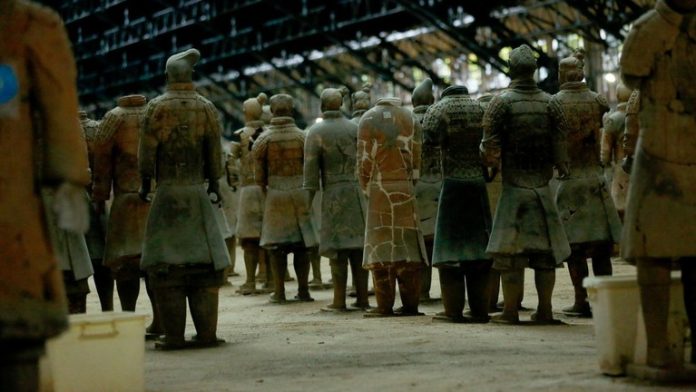|
Lazy eyes listen
|
NewsRescue
Chinese archaeologists claim to have discovered 220 more terracotta warriors near Emperor Qin Shi Huang’s Mausoleum in Shaanxi Province in the country’s northwest.
The province’s Relics Management Bureau reported on Thursday that 16 terracotta horses, four chariots, weapons, and production tools had also been discovered.
The discoveries were made during an excavation at Pit No.1, the mausoleum’s largest burial pit, which spans 14,260 square meters.
Archeologists have recently made several significant discoveries, according to Shen Maosheng, a researcher at the Emperor Qin Shi Huang’s Mausoleum Site Museum.
Researchers believe the Terracotta Army was created by Greeks who arrived in China before Marco Polo.
According to him, the scientists were able to determine the formation in which the figures were placed into the ground.
According to Shen, researchers have also figured out how the terracotta sculptures were made. The carvings on the warriors’ bodies were completed first, followed by the attachment of the arms.
The Terracotta Army is a massive collection of full-sized clay-based sculptures depicting Qin Shi Huang’s armies.
In 210-209 BCE, they were buried in the ground around his mausoleum in order to protect the ruler in the afterlife. In 1974, the discovery of the figures caused a sensation. Since then, excavation at the site has been ongoing. Over 8,000 soldiers are thought to be part of the underground army.





